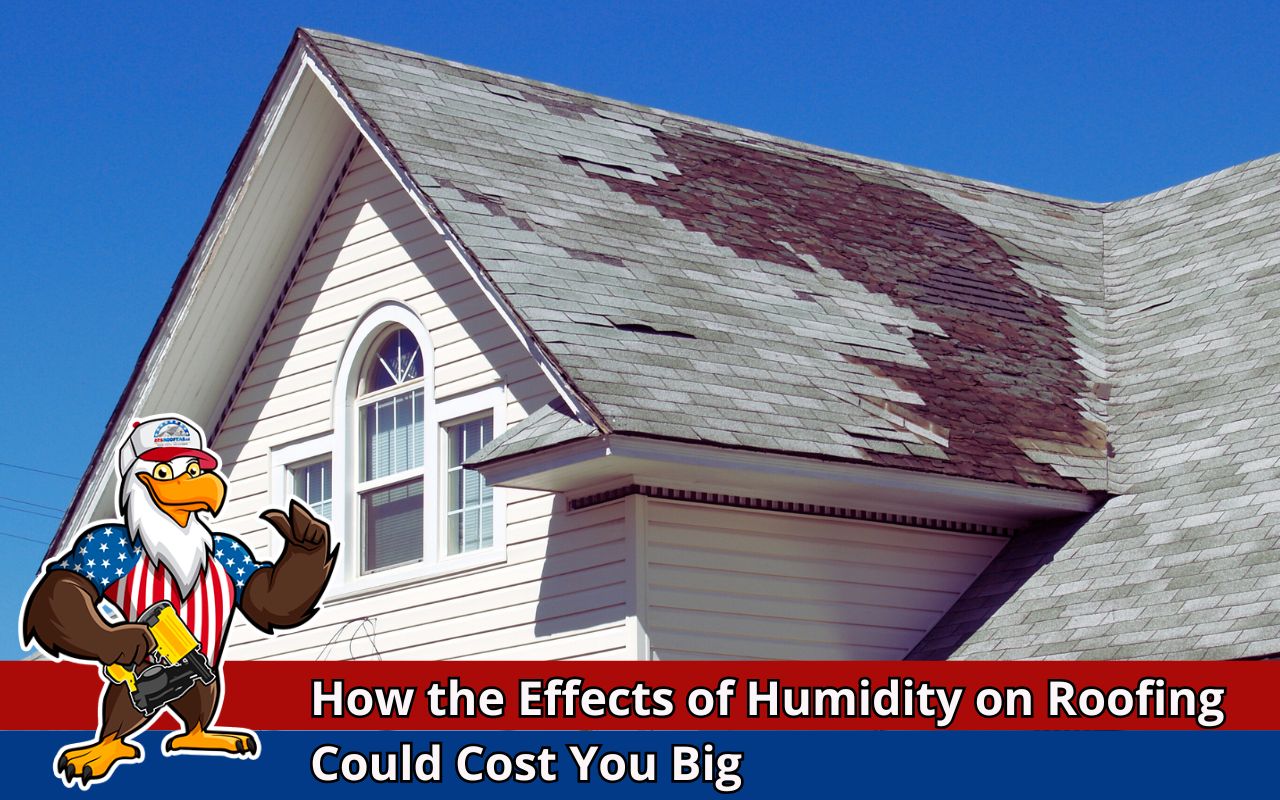
Every homeowner dreams of a durable roof. However, humidity is a silent enemy. The effects of humidity on roofing often go unnoticed, causing decay, mold, and structural issues. Over time, this damage can lead to costly repairs or replacements. In Louisiana’s humid summers, moisture causes roof materials to expand and contract. Understanding the effects of humidity on roofing helps prevent expensive surprises. Learn more about professional solutions on our roofing services page.
The Relationship Between Humidity and Roofing Materials
Humidity measures water vapor in the air. Roofing materials like asphalt, metal, wood, and clay respond differently to moisture. Asphalt shingles may swell slightly, while wood shakes can warp or rot. Metal roofing can develop condensation, causing rust over time. Clay or concrete tiles trap moisture, fostering moss or algae growth. Expansion and contraction cycles from humidity create stress points, cracking or curling materials. Sealants, underlayment, and flashing can degrade. By selecting moisture-resistant underlayments, homeowners reduce the harmful effects of humidity on roofing.
Signs of Humidity Damage on Your Roof
Discoloration or dark streaks on shingles often indicate excessive moisture retention. Curling, cracking, or blistering shingles suggest weakening asphalt. Wet spots, water stains, or musty attic odors show water penetration. Recognizing these signs early helps prevent further damage. Promptly addressing issues preserves your home’s structure.
Impact of Humidity on Different Roofing Types
Wood absorbs moisture, causing warping or rot. This can increase repair costs and shorten roof life. Conversely, metal roofing resists moisture, reducing mold growth and structural damage. Investing in metal roofs is practical in humid climates. This improves long-term durability and minimizes maintenance related to the effects of humidity on roofing.
Preventive Measures Against Humidity-Related Roof Damage
Select moisture-resistant materials and quality installation. Use protective coatings or sealants on vulnerable surfaces. Zinc or copper strips reduce algae growth, while water-repellent treatments limit absorption in wood and tiles. Seal gaps and fasteners properly to prevent water entry. Schedule biannual maintenance to clean gutters, check shingles, and remove debris. These measures diminish the effects of humidity on roofing. For professional guidance, contact our experts today.
Importance of Proper Ventilation in Humid Climates
Proper ventilation manages attic moisture. Intake and exhaust vents maintain airflow, preventing condensation and mold. Ridge vents, turbine vents, or powered vents enhance circulation. Vapor barriers under attic floors protect insulation. Optimizing ventilation reduces the negative effects of humidity on roofing and supports a healthier indoor environment.
Professional Maintenance Services for Humidity-Prone Roofs
Hiring professional roofers ensures early detection of humidity-related problems. Inspections include drone surveys, moisture readings, and infrared scans. Targeted repairs, like underlayment replacement or specialized coatings, prolong roof life. Maintenance agreements offer seasonal cleanings and gutter checks. In humid areas, these services protect against persistent moisture threats.
Cost Comparison: Repairing vs. Replacing a Humidity-Damaged Roof
Minor issues like small leaks or isolated shingle damage are less costly to repair. Extensive humidity damage may require full replacement. New roofs provide durable, moisture-resistant materials and better ventilation. Consulting a professional helps decide between repair or replacement, balancing cost and long-term protection against the effects of humidity on roofing.
DIY Tips for Monitoring Humidity Levels in Your Home
Use a hygrometer to track indoor humidity between 30%-50%. Place units in attics and damp areas. Utilize dehumidifiers in basements and attics. Promote air circulation with fans and proper exhaust ventilation. These steps reduce moisture buildup and minimize the effects of humidity on roofing.
Frequently Asked Questions
How does humidity affect roofing materials?
Humidity causes roofing materials to absorb moisture, leading to expansion and contraction. Over time, this weakens structural integrity. Effects vary by material: swelling, warping, rotting, or condensation buildup can occur.
What are the signs of humidity damage on a roof?
Discoloration or dark streaks, curling or blistering shingles, and wet spots or musty attic odors indicate excessive moisture retention and potential structural issues.
Prevention includes moisture-resistant materials, proper ventilation, protective coatings, routine maintenance, and professional inspections to minimize the effects of humidity on roofing.
Which roofing types are more resistant to humidity damage?
Metal roofs are more resistant than wood, asphalt, or clay tiles. They absorb less moisture, reducing mold growth and structural deterioration in humid climates.
What are the cost considerations between repairing and replacing a humidity-damaged roof?
Minor repairs are cheaper than full replacement. Extensive damage may require a new roof with moisture-resistant materials and improved ventilation. Professional advice ensures the best decision.
Safeguarding Your Roof from the Effects of Humidity
Long-term protection involves selecting moisture-rated materials, professional installation, and ongoing maintenance. Enhance attic ventilation and install vapor barriers. Schedule inspections and cleanings to remove algae, moss, or debris. Apply periodic protective coatings. Managing each aspect reduces the toll of humidity, ensuring a durable roof. Learn more about professional solutions on our roofing services page or contact us today.
